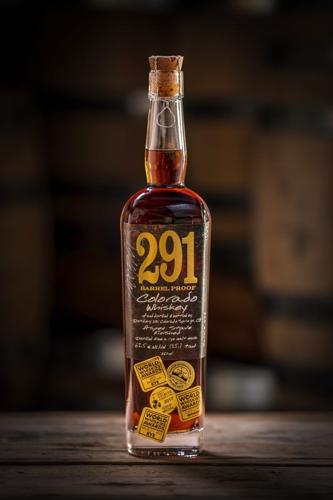
Whiskey writers used to hold up scotch whisky as the epitome of the craft, expending gallons of ink on the subject. Over the years, especially in this region, more pixels are dedicated to Kentucky bourbons and Tennessee whiskeys than any other style of spirit. But we often forget about other regional styles that, while different, certainly have merit. Think Pennsylvania rye whiskey, smoky Texas whiskeys and old-school Colorado whiskey, usually reminiscent of the sort of bottle of rye hooch that a cowtown bartender would slide down the bar with a dirty shot glass to thirsty cattle wrangler or gunslinger.
Distiller Michael Myers grew up in Georgia and on Flat Creek Farm outside of Shelbyville, Tenn., just about seven miles from both Jack Daniel’s and George Dickel — but he definitely has frontier sensibilities about him. I met him at a local bar late last year to talk about his journey to becoming an award-winning distiller, and his story was fascinating.
His first career was as a fashion and beauty photographer working with New York magazines and traveling the globe. He and his family lived near the World Trade Center on 9/11, and the tragic event so shook him that he packed up his bags and took his family to visit friends in Colorado to recover. He ended up falling in love with the state, and after a few years of shuttling back and forth while trying to keep his photography career alive, he made the big move for good.
Living in the shadow of Pike’s Peak, Myers rediscovered the love of the wilder, less urbane times of his youth browning up on Southern farms. After reading an article about the distillation business, he decided to take a stab at that.
“People thought I was crazy or lying when I told them I had never distilled or even brewed beer before,” Myers recalls with a chuckle. He began reading and studying about the process of distillation and actually received his permit to distill in just six weeks. Completely bootstrapping his own process, Myers knew there was no way he could afford one of those fancy copper stills manufactured by the artists at Vendome in Louisville, so he decided to build his own with the help of a buddy who was a welder.

Distiller Michael Myers
There’s a reason why those Vendome stills are so beautiful and pricey. Copper is an essential ingredient in the distilling process. At a molecular level, copper interacts with the sulfur created in the fermentation process and cancels out the undesirable aromas and flavors. Fortunately, the longtime photog had access to his own store of copper in the form of used photogravure plates. He included them in the design of his still, literally turning it into a work of art. “The images on those plates are all meaningful to me, and I like to think they are a part of the whiskey now,” he explains.
With such a tiny system and very little space, his first batches were actually cooked and fermented outdoors — probably a safer alternative anyway for a fledgling chemical engineer. One part of the system that is always perilous is managing a boiler to produce steam to power the process. He found a cut-rate solution in the form of a home steam generator, like the kind you would install if you were putting a fancy steam shower in your bathroom.
It worked great with one exception. Myers didn’t realize the steam generator had an automatic shut-off timed for 45 minutes, lest a homeowner turn into a lobster in the shower. “I learned exactly how long 45 minutes was so that I could get back to the still to turn it back on again. I timed all my errands and trips to the nearby bar so that I could always be there to flip the switch. My friends told me I was like Desmond, that guy in the bunker on Lost."
All that running back and forth paid off as Myers finished his first run of whiskey exactly 10 years after 9/11. “I always knew I wanted to make a Western-style whiskey with lots of rye and spice,” he says. In fact, even though his flagship 291 Colorado Whiskey is technically a rye, he doesn’t mention that prominently in the marketing materials. He explains: “To me, a Colorado whiskey is rye, so I just call it that.”
Spirits judges didn’t need any hints, because Myers began to receive high scores and awards from tasting panels right out of the chute. The Whiskey Bible awarded his first release 94 points, naming it the No. 2 American rye whiskey of the year, and in later years it was recognized on a global basis. Now a bottle of 291 has so many awards stickers on it that it looks like a NASCAR racer’s jumpsuit.
What makes 291 memorable is that it is truly a unique Western-style product, big and bold with an intentionally heavy mouthfeel. Myers ages his whiskeys in heavily charred American oak barrels for a more in-your-face wood than the more lightly charred barrel of most Tennessee and Kentucky distillers. He then adds an additional step of aging the juice over toasted aspen staves, contributing a sense of Colorado terroir that is even smokier and spicier than oak. The aspen contributes more of a maple character to the final whiskey than the vanillas of traditional oak-only aging.
Along the way, Myers has expanded his production facility and product line, growing from a capacity of 60 gallons a month with his original system to 100 gallons per day. Line extensions include unaged “white dog” versions of his rye, as well as more traditional bourbon and wheated whiskeys. Add in small-batch and single-barrel special editions, and his product line is pretty impressive for what is still essentially a small operation.
Now distributed in 18 states plus Canada, the U.K. and Germany, most of 291’s products are only available in markets closer to his Colorado base. However, the flagship is now available in Middle Tennessee, and other products can be purchased from the distillery website. (But not to Tennessee, yet, damn it!)
So look for the striking bottle of 291 Colorado Whiskey with its interesting letterpress-printed label and a font created from Myers’ own handwriting. The name 291 comes from the address of famous photographer Alfred Stieglitz's Manhattan gallery so that Myers can always be reminded of the importance of art in his process. He won’t forget, but he’s happy he’s made the change, saying, “I thought I was going to die a photographer, but it’s been a great ride!”






